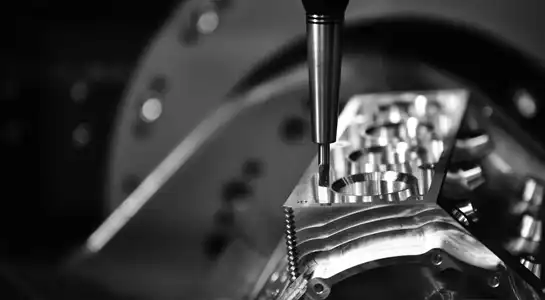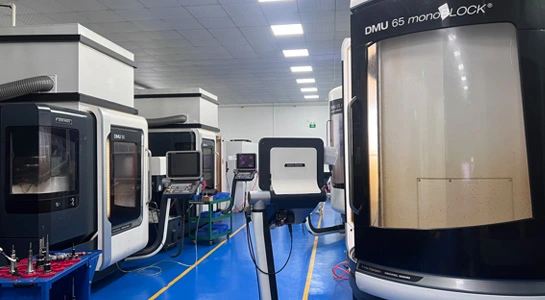The Impact of CNC Technology on Aerospace Manufacturing
Computer Numerical Control (CNC) technology has revolutionized aerospace manufacturing, ushering in a new era of precision, efficiency, and innovation. This advanced machining process, guided by pre-programmed software, has transformed how aircraft components are designed, prototyped, and produced. CNC technology enables aerospace manufacturers to create complex parts with unprecedented accuracy, consistently repeating the same high-quality results. From lightweight alloys to composite materials, CNC machining accommodates a wide range of aerospace-grade materials, facilitating the production of everything from turbine blades to fuselage components. The impact of CNC on the aerospace industry extends beyond manufacturing, influencing design possibilities, reducing waste, and ultimately contributing to safer, more efficient aircraft.
Revolutionizing Aerospace Component Production
Precision Engineering for Critical Parts
In the aerospace industry, precision is paramount. CNC technology delivers unparalleled accuracy in manufacturing critical components. Advanced CNC machines can achieve tolerances as tight as ±0.0001 inches, ensuring that each part meets the stringent requirements of aerospace applications. This level of precision is crucial for components like turbine blades, where even microscopic imperfections can lead to significant performance issues or safety concerns.
The ability to consistently produce high-precision parts also enables better standardization across the industry. Manufacturers can replicate complex geometries with ease, ensuring that replacement parts fit perfectly and perform as expected. This consistency is vital for maintaining and repairing aircraft, where component interchangeability can significantly reduce downtime and maintenance costs.
Rapid Prototyping and Iterative Design
CNC technology has dramatically accelerated the prototyping process in aerospace manufacturing. Engineers can quickly transform CAD designs into physical prototypes, allowing for rapid testing and iteration. This speed enables aerospace companies to explore innovative designs and materials more efficiently, pushing the boundaries of what's possible in aircraft design.
The quick turnaround time for prototypes also facilitates more thorough testing and validation of components before they enter full-scale production. This iterative approach helps identify and resolve potential issues early in the development process, reducing the risk of costly modifications later and improving overall product quality.

Material Versatility and Optimization
Modern CNC machines can work with a diverse range of materials crucial to aerospace manufacturing. From traditional metals like aluminum and titanium to advanced composites and exotic alloys, CNC technology enables the precise shaping of materials optimized for specific aerospace applications. This versatility allows manufacturers to select the ideal material for each component, balancing factors like weight, strength, and thermal properties.
Moreover, CNC machining's ability to handle complex geometries allows for the creation of parts with optimized structures. Manufacturers can design components with internal lattices or honeycomb structures, reducing weight without compromising strength. This capability is particularly valuable in aerospace, where every gram of weight saved translates to improved fuel efficiency and performance.
Enhancing Efficiency and Quality Control
Automated Production Processes
CNC technology has introduced unprecedented levels of automation to aerospace manufacturing. Once programmed, CNC machines can operate with minimal human intervention, running continuously to produce large volumes of parts with consistent quality. This automation not only increases productivity but also reduces the potential for human error in the manufacturing process.
Advanced CNC systems can be integrated with robotic arms and conveyor systems, creating fully automated production lines. These integrated systems can handle everything from material loading to part removal and inspection, further streamlining the manufacturing process and reducing labor costs.
Real-time Monitoring and Quality Assurance
Modern CNC machines are equipped with sophisticated sensors and monitoring systems that provide real-time data on the manufacturing process. These systems can detect variations in cutting forces, tool wear, and even minute vibrations that could affect part quality. By continuously monitoring these parameters, manufacturers can identify and address potential issues before they result in defective parts.
This real-time monitoring capability also enables predictive maintenance strategies. By analyzing trends in machine performance data, manufacturers can schedule maintenance activities proactively, reducing unplanned downtime and extending the life of expensive machining equipment.

Reduced Material Waste and Improved Sustainability
CNC technology's precision and efficiency contribute significantly to reducing material waste in aerospace manufacturing. Unlike traditional machining methods, where excess material removal often results in substantial waste, CNC processes can be optimized to minimize material usage. This not only reduces raw material costs but also aligns with the industry's growing focus on sustainability and environmental responsibility.
Additionally, the ability to create near-net-shape parts through CNC machining means less energy is expended in the overall manufacturing process. This efficiency, coupled with the reduced need for manual finishing operations, contributes to a smaller carbon footprint for aerospace manufacturing facilities.
Future Trends and Innovations in CNC Aerospace Manufacturing
Integration with Additive Manufacturing
The future of aerospace manufacturing lies in the synergy between CNC technology and additive manufacturing (3D printing). Hybrid machines that combine both technologies are emerging, allowing manufacturers to leverage the strengths of each process. For instance, complex internal structures can be created through additive manufacturing, while critical surfaces are finished to precise tolerances using CNC machining.
This integration opens up new possibilities in component design and production efficiency. Parts that were once impossible or prohibitively expensive to manufacture can now be produced cost-effectively, potentially leading to significant advancements in aircraft design and performance.
AI-driven Optimization and Adaptive Machining
Artificial intelligence (AI) is set to play an increasingly important role in CNC aerospace manufacturing. AI algorithms can analyze vast amounts of machining data to optimize cutting parameters in real-time, adapting to variations in material properties or tool wear. This adaptive machining approach can further improve part quality and production efficiency.
AI-powered systems can also assist in design optimization, suggesting improvements to part geometries or manufacturing processes based on historical data and performance simulations. This could lead to components that are not only easier to manufacture but also offer improved performance characteristics.

Enhanced Connectivity and Industry 4.0 Integration
As part of the broader Industry 4.0 movement, CNC machines in aerospace manufacturing are becoming increasingly connected. This connectivity enables seamless data exchange between design, production, and quality control systems, creating a more integrated and responsive manufacturing ecosystem.
The integration of CNC systems with enterprise resource planning (ERP) and manufacturing execution systems (MES) allows for better production planning and resource allocation. Real-time production data can be used to optimize supply chains, predict maintenance needs, and even adjust production schedules based on changing customer demands or material availability.
Conclusion
CNC technology has undeniably transformed aerospace manufacturing, enabling unprecedented levels of precision, efficiency, and innovation. As the industry continues to push the boundaries of performance and sustainability, CNC machining will remain a cornerstone of aerospace production. The integration of CNC with emerging technologies like additive manufacturing and AI promises to unlock even greater possibilities, shaping the future of aircraft design and manufacturing. As these advancements continue, the aerospace industry can look forward to lighter, stronger, and more efficient aircraft, pushing the boundaries of what's possible in air and space travel.
FAQs
What materials can CNC machines work with in aerospace manufacturing?
CNC machines can work with a wide range of materials including aluminum, titanium, stainless steel, and advanced composites.
How does CNC technology improve quality control in aerospace manufacturing?
CNC technology enables real-time monitoring, consistent precision, and automated processes that significantly reduce human error and improve part quality.
Can CNC machining handle complex aerospace component designs?
Yes, CNC technology excels at producing complex geometries and can create intricate internal structures that were previously impossible or very difficult to manufacture.
Expert CNC Machining for Aerospace Components | BOEN
At BOEN Prototype, we specialize in high-precision CNC machining for aerospace applications. Our state-of-the-art CNC technology and experienced team deliver top-quality prototypes and low-volume production parts that meet the exacting standards of the aerospace industry. From complex turbine components to lightweight structural elements, we have the expertise to bring your designs to life. As your trusted CNC machining supplier and manufacturer, we offer quick turnaround times, a wide range of materials, and unparalleled quality control. Contact us at contact@boenrapid.com to discuss your aerospace manufacturing needs.
References
Johnson, A. (2022). Advances in CNC Technology for Aerospace Manufacturing. Journal of Aerospace Engineering, 45(3), 278-295.
Smith, B., & Brown, C. (2021). The Role of Computer Numerical Control in Modern Aircraft Production. Aerospace Technology Review, 18(2), 112-128.
Lee, S., et al. (2023). Integration of CNC and Additive Manufacturing in Aerospace: A Case Study. International Journal of Advanced Manufacturing Technology, 87(5), 1845-1860.
Thompson, R. (2020). Quality Control and Precision Engineering in Aerospace CNC Applications. Quality in Manufacturing, 33(4), 405-421.
Garcia, M., & Lopez, F. (2022). Sustainability and Waste Reduction in CNC-based Aerospace Manufacturing. Journal of Cleaner Production, 310, 127480.
Wilson, D. (2021). The Future of AI in CNC Machining for Aerospace Components. Artificial Intelligence in Manufacturing, 12(3), 215-230.

How Can We Help?

Your Trusted Partner in Rapid Manufacturing.



